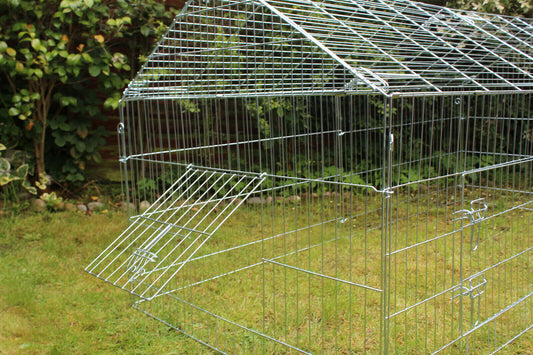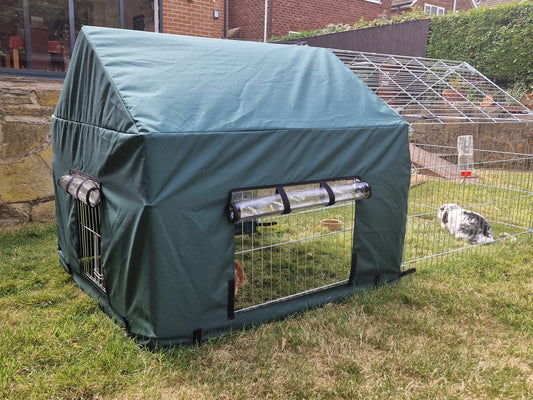By Karen Cornish
Five years’ worth of missing pet data from PetLog – the UK’s largest microchipping database – has revealed a 63% increase in missing pets during the summer months. That's why we designate the month of July as National Lost Pet Prevention Month. We do this to make people aware of lost and stolen pets and teach them how to keep their pets safe.
According to a study conducted by Admiral Pet Insurance, 184 cats go missing every minute in the UK. This means that a cat disappears every three seconds. Why do so many cats go missing and what can pet parents do to prevent it?
There are lots of things that cat owners can do to prevent their pets from going missing. Having more of these reduces the chance of a cat getting lost. It also increases the likelihood of reuniting them with their owner.
Microchipping Your Cat
A new law in England requires all cat owners to have their pets microchipped by June 10, 2024. Failure to comply will result in a fine of £500. This is not yet the case for Wales, Scotland, or Northern Ireland but the devolved nations are looking at whether this is something they will introduce in the future.
Microchipping is an effective form of permanent identification for pets. A vet injects a microchip, about the size of a grain of rice, containing a unique code just below an animal's skin. A scanner reads a chip's code and matches it to the owner's contact details on a database. Microchipping is quick and painless, and can make reuniting a lost cat with its owner much easier.
Data from Battersea Cats and Dogs Home suggests that lost cats are almost three times less likely to be reunited with owners than dogs due to the differing microchipping rates. 59% of cats brought into Battersea’s rescue centres in 2022 were not microchipped, compared to 21% of dogs. Battersea found 474 lost dogs with microchips, but only 40 lost cats were reunited with their owners.
Experts estimate that animal shelters in the UK receive 1.2 million cats annually. Cats that have not been microchipped are unlikely to be reunited with their owners as shelters will not be able to identify them. The owners of injured and deceased cats that end up at vet surgeries may never know what happened to their pet if they can’t be notified.
If your cat has a microchip, make sure the information on the database is current. There have been many heart-breaking cases of found pets being scanned for their microchips only to find that the contact details held by the database are wrong, preventing them from being reunited with their owners.
There are currently 14 national microchip databases operating in the UK, which means there is no central record – something that the British Veterinary Association (BVA) has been campaigning to change. If your cat has a microchip and you are unsure which database they are registered with, visit check-a-chip.co.uk and enter their unique code to find out.
Ensure the database holds all your current contact details and remember to let the company know your new details if they change.
Collars and tags
Before the advent of microchipping, the usual way to identify a cat would be an ID tag attached to a collar that included an owner’s telephone number. Cats Protection suggests that owners opt for microchipping instead of using ID tags because it is more permanent and safer than collars.
Adventurous outdoors cats can easily get their collars caught on things, which can be hazardous and lead to serious injuries including strangulation and jaw damage. Cats Protection says that if you want a collar for your cat the safest choice is a ‘quick release’ or snap opening variety that will undo automatically under pressure.
You also need to make sure that any collar your cat wears fits properly – you should be able to fit two fingers under it comfortably. If a collar is too tight it will be uncomfortable and if it’s too loose it is more likely to get caught.
ID tags for cats should be engraved with an owner’s name and preferably more than one contact telephone number – perhaps a landline and a mobile number. It is more important that a finder knows how to contact you than learn the name of your pet so prioritise the information on a tag if space is tight.
Pet trackers
With the advances in GPS technology, there are a few companies now selling collar-mounted tracking devices for cats. The best ones are lightweight, waterproof and shock resistant and can update a cat’s location every few seconds on your mobile phone. Pet trackers can be expensive (around £40-£50 for the device) and usually require a monthly subscription to use.
Pet trackers can be useful tools to find out what your pet gets up to when they are out and about. A tracking experiment carried out by Admiral Pet Insurance and Tractive GPS compared male and female cat activity and found that male cats were active on average 5 hours per day while female cats were only active on average 3 hours per day. Interestingly, they found that male cats tend to travel much further than females who generally preferred to stay closer to home.
Data compiled by Admiral Pet Insurance shows that there are nearly 265,000 cats listed as missing in the UK and over 60% of these are males. It is believed that one of the most common reasons that unneutered males leave their home is to find a mate and they can travel for several miles in search of a female in heat.
What to do if your cat goes missing
Cats Protection suggests owners do these five things to help them find a lost cat:
1. Shake a box of cat treats to call your cat back home
2. If your cat has a favourite toy, leave it in the garden for them to come back to.
3. Cats have a strong sense of smell so leave out their blanket or bedding to entice them back.
4. Go out when it’s dark to call your cat. Some cats are more active at night, especially during hot weather.
5. Leave a bowl of water and food out for your furry friend.
Cats are explorers by nature, and it is not unusual for pets to disappear for a few days on an adventure before turning up back at home looking perfectly healthy. If your cat leaving for a long time is unusual, they might be in trouble. They might need assistance.
Before you widen your search area, double-check that your cat is not hiding at home. Check your house and garden thoroughly – cats love getting into small cosy places, from inside cupboards and household appliances to behind furniture and even under floorboards.
Once you are sure your cat is not at home, speak to your neighbours and ask them to check their gardens and outbuildings as curious cats can easily become trapped if their stealthy snooping goes unnoticed.
Create posters with a recent picture of your cat, highlighting any unique features, and display them in your community. Also, get on social medial platforms and spread the word asking for local people to keep an eye out for your pet.
If your cat has a microchip, reach out to the database where you registered their details and inform them that your cat is missing. It is also a good idea to ring around local vets and animal shelters to see if your cat has been handed in. Visit catchat.org to find a list of cat rescue organisations close to you.
What to do if you find a cat
If you find an unfamiliar cat and don’t know who it belongs to, it could be a stray that has gone missing from its home further afield or it could be a feral cat. How can you tell the difference?
If a cat looks skinny, dishevelled, confused, and possibly trying to get into your house, it is likely a pet that has strayed too far from home and got lost.
If a cat seems friendly enough to safely get inside a pet carrier itself, you could take it to your nearest vet who will be able to scan it for a microchip and contact their owner. You could also make posters with a photo of the cat to put up in the neighbourhood or post the details on social media groups in case anyone is looking for them.
A feral cat (a cat that has never had an owner) by comparison will be adept at looking after itself and is more likely to look well-fed and groomed. Feral cats can live alone or as part of a colony of cats and tend to be fearful or aggressive around people.
Moving house
Cats are territorial animals and will have spent a lot of time scent-marking their home and forming a strong attachment to it. Therefore, moving house can prove to be a tricky time for cats and it is not uncommon for cats to go missing in the process.
When you move into a new home it is a good idea to choose one room for your cat to stay in for the first few days. Put your cat’s bowls, litter tray, bedding, scratching post, toys and some cardboard boxes in there with them and keep the door shut.
When you are all unpacked and your cat seems comfortable, you can let them out to explore the rest of their new home but make sure the whole house is escape-proof first. Check windows and doors, and watch out for any existing cat flaps or chimneys. Cats can make a dash for freedom out of the smallest spaces and could get easily lost in their new neighbourhood.
It is a good idea to wait at least three weeks before letting your cat outside for the first time so that they have had plenty of time to scent-mark and become comfortable in their new home. If you’ve not moved very far, a cat can easily pick up the scent of their previous territory and head back there.
If you think this could happen, leave a note for the new occupants with your contact details asking them to let you know if your cat shows up. Advise them not to let your cat in or offer food or it will be very tricky to get your cat away from the old house.
Outdoors or indoors cats?
According to research by Nottingham Trent University in 2021, 41% of cat owners keep their pets exclusively indoors due to safety fears, such as theft and busy roads. Indoor cats tend to live longer than those that spend most of their time outdoors, but to have a happy pet, owners need to make sure they are sufficiently mentally and physically stimulated.
If you decide to keep your cat indoors, you must be vigilant in keeping doors and windows closed so that your cat cannot slip through unnoticed. Window and door guards can be useful in the summer months when you want to keep a cat indoors but also want some fresh air through the house.
If a cat has always lived exclusively indoors, it can be dangerous if they suddenly find themselves out in the world. They won’t have the necessary street sense to know how to deal with neighbourhood cats or to navigate traffic so could find themselves in big trouble.
In order to give your cat a sense of freedom outdoors without the risk of them becoming lost or stolen you could install a ‘catio’. A catio (cat patio) is an enclosed outdoor area for cats that enables them to enjoy all the joys and enrichment that come with being in a garden with the security and safety of being kept indoors. Catios can be as big as you like and should include viewing platforms of differing heights, sunbathing spots and cosy hideaways.
If you enjoyed this article, why not read:









